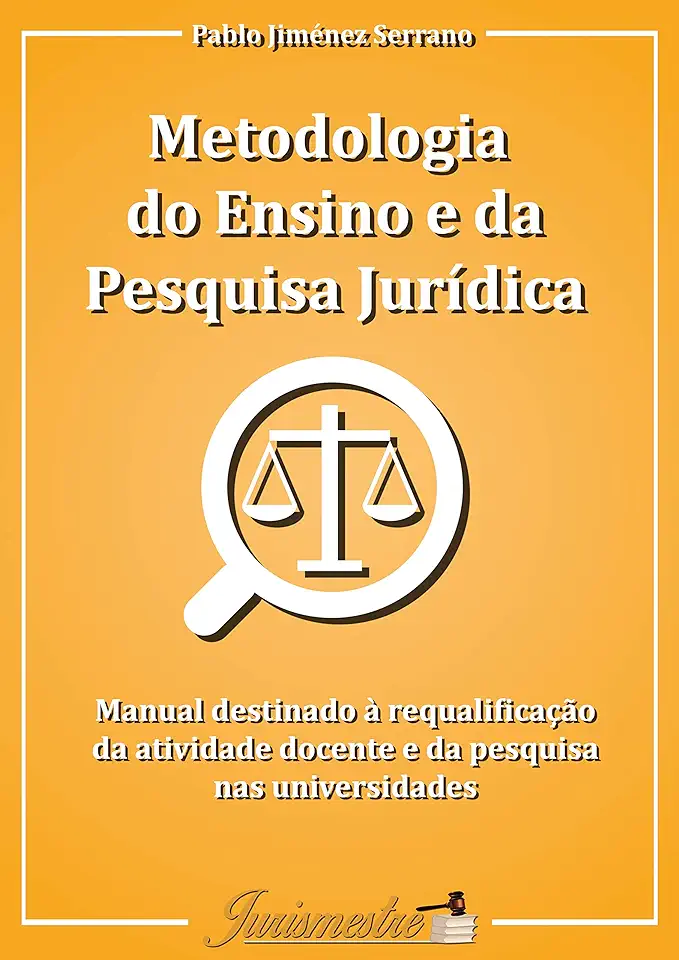
Methodology of Teaching and Legal Research - Pablo Jiménez Serrano
Methodology of Teaching and Legal Research: A Comprehensive Guide for Law Students and Professionals
Introduction
In the ever-evolving field of law, staying up-to-date with the latest methodologies of teaching and legal research is crucial for both law students and professionals. Pablo Jiménez Serrano's comprehensive book, "Methodology of Teaching and Legal Research," serves as an invaluable resource, providing a thorough understanding of the fundamental principles and practical techniques essential for effective legal education and research.
Key Features:
Comprehensive Coverage: This book covers a wide range of topics, from the basics of legal research to advanced research techniques, making it suitable for both beginners and experienced researchers.
Clear and Concise Explanations: The author presents complex concepts in a clear and concise manner, ensuring that readers can easily grasp the material and apply it in their own research endeavors.
Practical Examples and Case Studies: Throughout the book, real-life examples and case studies are used to illustrate the concepts discussed, making the learning process more engaging and relatable.
Interactive Exercises and Activities: Each chapter includes interactive exercises and activities that reinforce the understanding of the material and encourage readers to apply their knowledge.
Chapter Summaries:
Chapter 1: Introduction to Legal Research
- Provides an overview of the importance of legal research and its role in the legal profession.
- Discusses the different types of legal research, including primary and secondary sources.
- Introduces the concept of legal citation and its significance in legal writing.
Chapter 2: Finding the Law
- Explores various sources of law, including statutes, regulations, case law, and legal encyclopedias.
- Explains how to use legal databases and search engines effectively to locate relevant legal materials.
- Provides tips for efficient and comprehensive legal research.
Chapter 3: Reading and Analyzing Legal Materials
- Offers techniques for reading and analyzing legal materials critically.
- Discusses the importance of understanding the context and purpose of legal materials.
- Highlights the significance of identifying key legal issues and arguments.
Chapter 4: Legal Writing and Citation
- Covers the fundamentals of legal writing, including structure, style, and grammar.
- Provides guidance on proper legal citation using various citation styles.
- Emphasizes the importance of clear and concise legal writing.
Chapter 5: Researching International and Comparative Law
- Explores the complexities of international and comparative legal research.
- Discusses the different sources of international law and how to access them.
- Provides tips for conducting effective comparative legal research.
Chapter 6: Advanced Legal Research Techniques
- Introduces advanced research techniques, such as legislative history research and case law analysis.
- Explains how to use specialized legal research tools and databases.
- Provides strategies for staying up-to-date with legal developments.
Conclusion:
"Methodology of Teaching and Legal Research" by Pablo Jiménez Serrano is an indispensable resource for law students and professionals seeking to enhance their research skills and stay ahead in the dynamic legal landscape. With its comprehensive coverage, clear explanations, and practical examples, this book serves as a valuable guide for anyone involved in legal education and research. Embrace the opportunity to elevate your legal knowledge and expertise by investing in this essential resource.